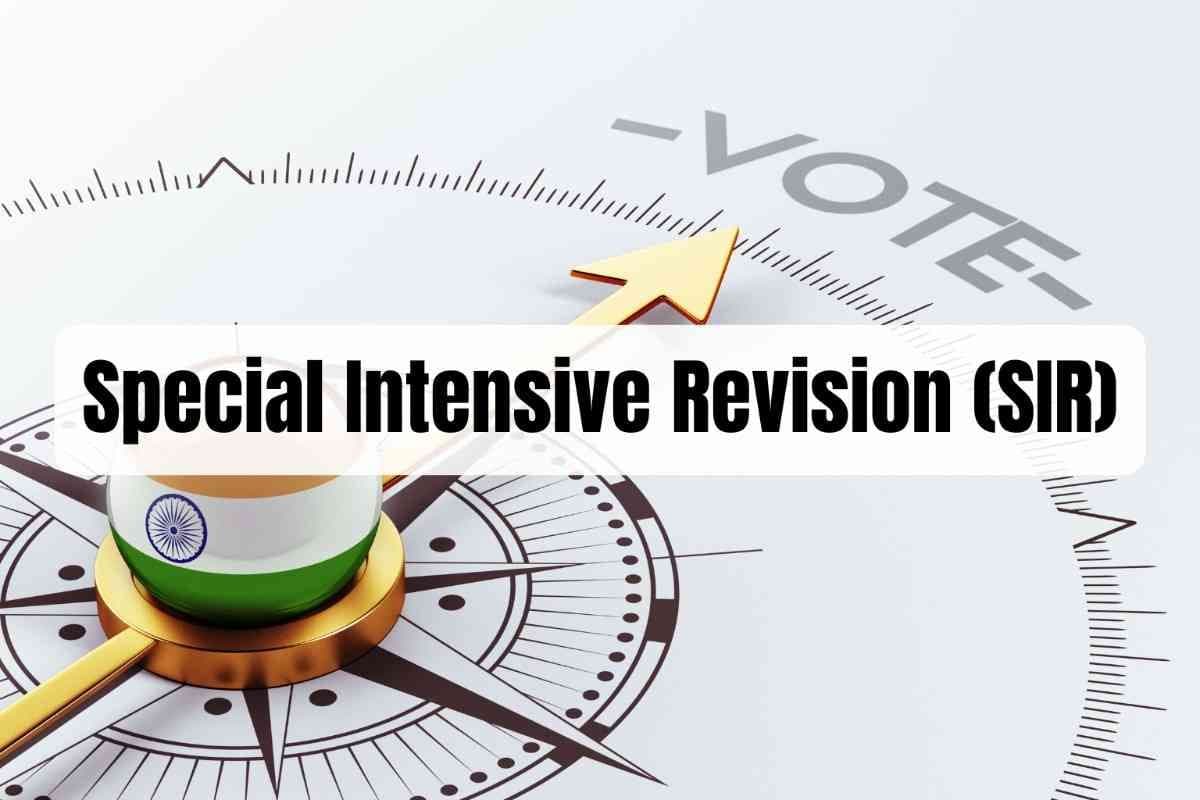Terrorism and India’s Security Landscape
May, 2025
•4 min read
Context
India just fall prey to a terror attack in “Baisaran Meadows” of Pahalgam, also known as ‘mini- Switzerland’ resulting in the loss of lives of 26 civilians and many injured. The Resistance Front, a proxy outfit of Lashkar-e-Taiba is a proscribed terrorist organization listed under UAPA has claimed responsibility for the attack.
Introduction
In the modern geopolitical imagination, few nations sit at the intersection of internal complexity and external hostility as sharply as India. A post-colonial democracy navigating developmental challenges while countering decades of terrorism, India’s security landscape is a crucible of both opportunity and danger. From cross-border militancy to left-wing extremism, urban terrorism to cyber threats, India faces a spectrum of terror challenges that demand not only tactical responses but also deep strategic recalibration.
This blog attempts to unpack the multi-dimensional nature of terrorism in India, examine the institutional responses, analyze persistent challenges, and suggest a forward-looking approach—contextualized through constitutional principles, strategic doctrines, and global realities.
Understanding Terrorism
Terrorism in India is not monolithic—it operates through various channels and is influenced by historical grievances, foreign interference, ideological extremism, and structural weaknesses.
Cross-Border Terrorism
- Kashmir Insurgency (post-1989): A mixture of local alienation and active support from Pakistan-based groups like Lashkar-e-Taiba (LeT), Jaish-e-Mohammed (JeM), and Hizbul Mujahideen.
- State-sponsored Proxy War: India has long accused Pakistan's ISI of facilitating a “proxy war,” particularly after the Kargil War (1999). This model allows plausible deniability while bleeding India with “a thousand cuts.”
Left-Wing Extremism (LWE)
- Concentrated in the “Red Corridor” (Chhattisgarh, Jharkhand, Odisha, Maharashtra, parts of Andhra Pradesh).
- Often termed the “biggest internal security threat” by the Ministry of Home Affairs.
- Driven by socio-economic deprivation, land alienation, and tribal marginalization.
Religious and Ethnic Extremism
- North-East Insurgency: Ethno-nationalist groups like NSCN-IM, ULFA, etc. have historically challenged integration.
- Communal Terror: Blasts in Malegaon, Samjhauta Express, and other incidents point to rising threats from fringe groups across the spectrum.
Urban and “Lone Wolf” Terrorism
- The 2008 Mumbai attacks signified a shift to urban targets and high-profile operations.
- Rise of radicalization via digital platforms has enabled isolated individuals to carry out attacks without traditional networks.
Cyber Terrorism
- Increasingly, groups are targeting India’s critical infrastructure—banking systems, power grids, defense installations.
- China-based groups, in particular, have been suspected in data breaches and malware attacks, raising hybrid warfare concerns.
Multiple Choice Questions
QUESTION 1
Easy
Which of the following statements best explains the nature of terrorism in India?
Select an option to attempt
QUESTION 2
Medium
With reference to the evolution of terrorism in India, consider the following statements:
- The 2008 Mumbai attacks marked a significant shift in the nature of terrorism towards high-profile urban targets.
- State-sponsored proxy wars allow countries to wage conflicts without direct engagement, maintaining plausible deniability.
- Left-Wing Extremism is primarily driven by religious radicalization in tribal areas.
Which of the statements given above is/are correct?
Select an option to attempt
Institutional Architecture for Counter-Terrorism
India’s counter-terrorism structure is a complex web of agencies, laws, and intelligence coordination mechanisms.
Agencies and Coordination
- Intelligence Bureau (IB) – Domestic intelligence.
- Research and Analysis Wing (R&AW) – External intelligence.
- National Investigation Agency (NIA) – Post-26/11, created to investigate terror crimes across states.
- National Security Guard (NSG) – Elite commando force for anti-terror operations.
- Multi-Agency Centre (MAC) – Coordinates intelligence across states and center.
Legal Framework
- Unlawful Activities (Prevention) Act (UAPA): India’s principal anti-terror law, allows preventive detention and designating individuals as terrorists.
- Armed Forces (Special Powers) Act (AFSPA): Applies in "disturbed areas," granting armed forces legal immunity for counter-insurgency operations.
- National Security Act (NSA) and Public Safety Acts (in J&K): Allow preventive detention on security grounds.
International Cooperation
- India is a signatory to all 13 UN counter-terrorism conventions and has strongly pushed for the Comprehensive Convention on International Terrorism (CCIT) at the UN since 1996.
- Strategic bilateral cooperation with the US, Israel, France, UAE, and Saudi Arabia has enhanced intelligence sharing and extradition efforts.
- Through FATF, BRICS, and SCO’s RATS, India has kept terrorism financing and regional collaboration at the center of its foreign policy.
Cybersecurity Initiatives
- Institutions like CERT-In, National Critical Information Infrastructure Protection Centre (NCIIPC), and Cyber Swachhta Kendra work to secure critical infrastructure and respond to digital threats.
- Under MHA, the Indian Cyber Crime Coordination Centre (I4C) monitors radical digital content and cybercrime.
- India also engages globally on cyber norms through bilateral MoUs and platforms like GFCE and UN-GGE.
Challenges in the Fight Against Terrorism
Despite a robust legal and institutional framework, India faces several persistent issues:
Lack of Federal Counter-Terrorism Architecture
- A proposed National Counter-Terrorism Centre (NCTC) has remained unrealized due to state resistance over federal overreach.
- Intelligence sharing still relies heavily on personal networks rather than institutionalized protocols.
Politicization of Security
- Terror incidents are often followed by political point-scoring, affecting objective analysis and long-term strategy.
- Security decisions (like AFSPA withdrawals or internet shutdowns) are frequently guided by electoral compulsions.
Judicial Delays and Acquittals
- Low conviction rates under UAPA (~27% as per NCRB 2022).
- Extended trials and preventive detentions without sufficient evidence erode public trust.
Radicalization and Deradicalization Deficit
- Few state-led deradicalization programs exist.
- NGOs and civil society play a limited role due to fear of surveillance or being branded as “anti-national.”
Hybrid Warfare and Non-Traditional Threats
- Terrorism today involves misinformation campaigns, economic sabotage, and biological/chemical threats—areas where India lacks preparedness.
International cooperation and diplomacy
India’s fight against terrorism is deeply enmeshed in its foreign policy and strategic alliances.
Bilateral Cooperation
- Strategic ties with Israel (counter-insurgency training), USA (intelligence sharing), France, and Russia have bolstered India’s technical capabilities.
- India-UAE cooperation has resulted in deportation of several wanted extremists.
Global Platforms
- India is an active participant in UN Counter-Terrorism Committee, FATF, and has pushed for a Comprehensive Convention on International Terrorism (CCIT) since 1996—still blocked over disagreements on defining terrorism.
Naming and Shaming State Sponsors
- Diplomatic pressure on Pakistan has seen some success (e.g., grey-listing in FATF, UN designation of Masood Azhar), though its effectiveness remains limited.
Constitutional and Ethical Considerations
Fighting terrorism in a democracy involves difficult ethical and legal trade-offs. The Indian Constitution provides both the basis for counter-terror actions and safeguards against excesses.
- Article 22 guarantees protection against arbitrary arrest, but preventive detention laws often dilute these protections.
- Judicial review remains a powerful check, though the judiciary has often shown deference to national security arguments.
- Human Rights Commissions, NHRC, and RTI mechanisms offer recourse—but their effectiveness is variable.
The Second Administrative Reforms Commission (ARC) recommended that anti-terror laws must pass the triple test: necessity, proportionality, and effectiveness.
The Way Forward: Towards a Resilient Security Architecture
Addressing terrorism in India requires more than muscular policy—it requires institutional maturity, strategic foresight, and democratic accountability.
Suggested reforms:
- Institutionalize National Counter Terrorism Centre (NCTC) with state participation and constitutional safeguards.
- Revamp policing – Implement recommendations of Malimath Committee and Prakash Singh case for police reforms.
- Community policing and soft interventions to counter radicalization—especially youth engagement, education, and digital literacy.
- Invest in cyber-defense infrastructure—a dedicated Cyber Command under the armed forces.
- De-politicize counter-terrorism – Create a bipartisan security council similar to the UK’s COBRA committee.
- Faster judicial processes – Use dedicated terror courts and forensic improvements to ensure both justice and deterrence.
Conclusion
Terrorism poses a grave threat to India—not just to its physical security, but to the democratic values it holds dear. The battle is not merely against the gun-wielding militant but also against the ideologies of hate, the systemic vulnerabilities, and the policy inertia that allow terrorism to fester.
India must respond with firmness, but also with fairness; with intelligence, not just arms; and with constitutional resilience that reaffirms its commitment to justice, liberty, and unity.
Only then can we say—not just that we fought terror—but that we defeated it without losing ourselves in the process.
Related Blogs
![Vijay Diwas 2025: Why 16 December is Celebrated [UPSC Current Affairs]](/_next/image?url=https%3A%2F%2Fblog-media.superkalam.com%2FVijay_Diwas_2631842d69.jpeg&w=3840&q=75)
Vijay Diwas 2025: Why 16 December is Celebrated [UPSC Current Affairs]
Dec, 2025
•6 min read

Special Intensive Revision (SIR) of Electoral Rolls: Definition, Objectives, Significance, & Challenges
Dec, 2025
•4 min read

UNICEF Day 2025: 79 Years of Global Commitment to Child Rights & Protection
Dec, 2025
•4 min read